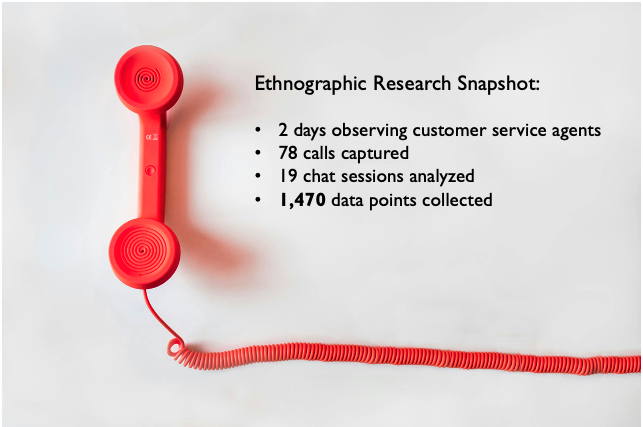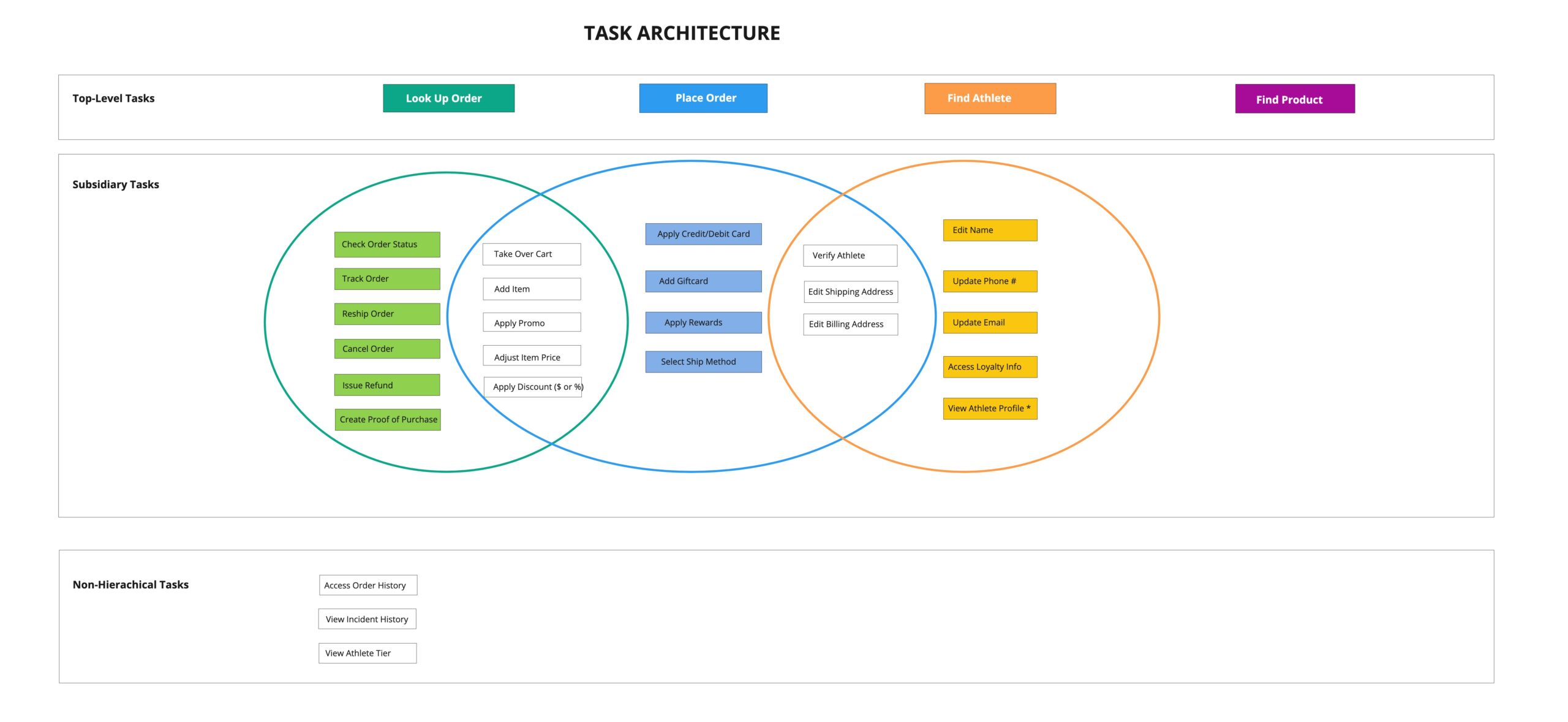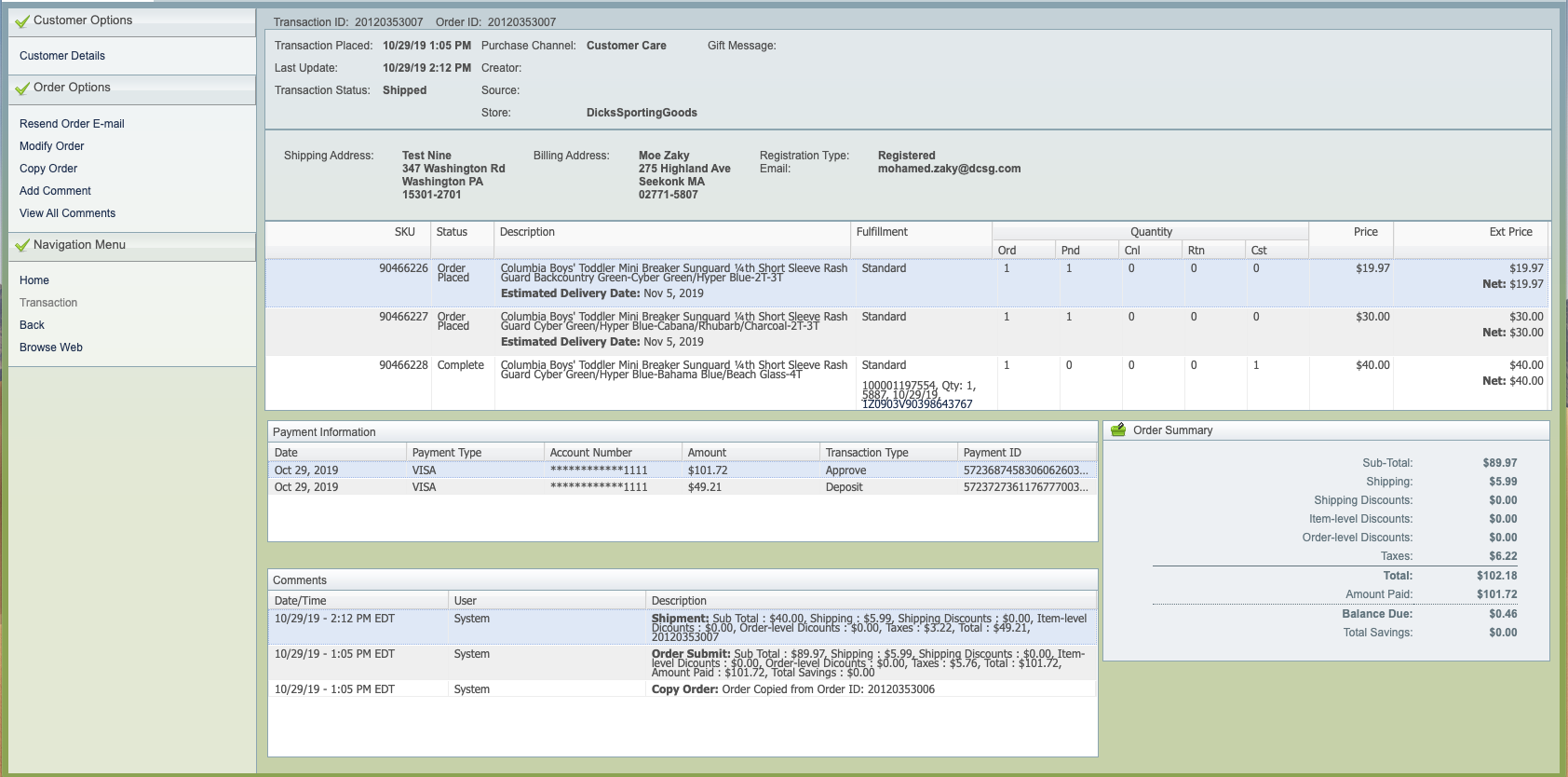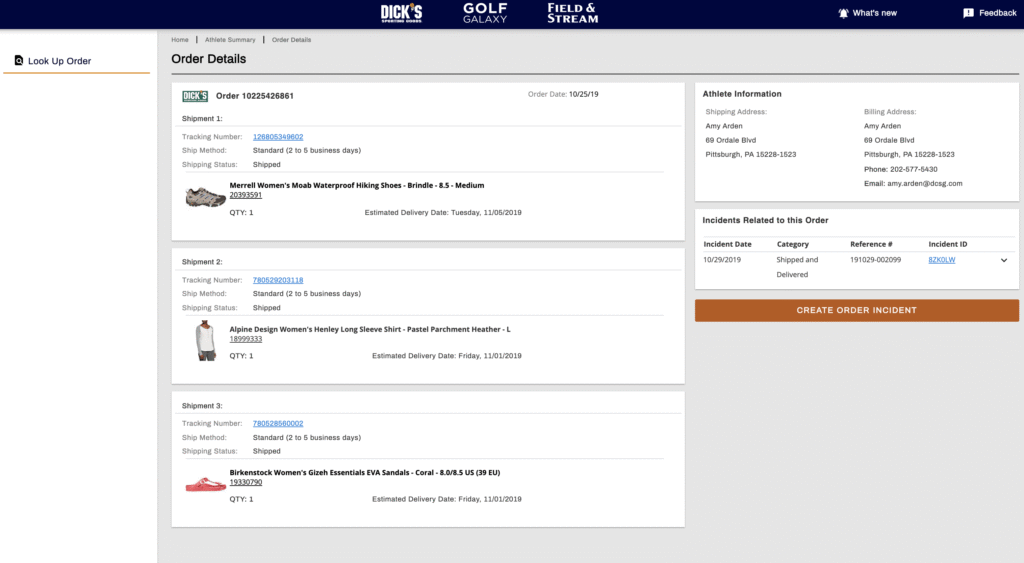End-to-End Enterprise Software
Solving an obvious problem sometimes involves finding and solving invisible problems first.
Overview
A Fortune 500 retailer sought to reduce operational costs and improve customer experience at its call centers. Business stakeholders believed that long call times were to blame, and that if the AHT (average handle time) of calls could be reduced, the company would both lower costs and serve customers more quickly.
For this project, I led the UX workstream within cross-functional Agile team. My end-to-end approach included:
- Collecting data to better understand the root causes of pain points
- Refining and scoping the problem space
- Identifying technical and design debt
- Prioritizing user tasks and product features
- Designing and testing prototypes
- Launching MVP software with users
Creating an in-house solution was a priority for business stakeholders and corporate leadership. The team overcame a series of challenges on this complex, high-visibility project to develop and deploy a successful MVP with additional features to be added.
Design Strategy
Discovery
As part of our discovery work, the team spent two days watching call center agents. We wanted to find out what was happening as agents worked, and what might be contributing to the AHT. We captured information such as average call length, hold times, and agent actions during holds. This method brought previously unknown data – such as the frequency of holds and how long holds lasted – into our product design. We were then able to identify and quantify which pain points were most impactful.

Collaboration
After analyzing data and identifying pain points, the team worked with stakeholders to prioritize key actions agents needed to be able. This resulted in a task architecture, which then informed product features and capabilities.

Design & Iteration
Before
We did a gap analysis of both design and technological debt in the legacy software. Poor color contrast, lack of heuristic cues, and difficulty distinguishing primary actions from other competing information led to a poor user – and customer – experience.

After
The new application offered several user improvements. These included displaying order information in a meaningful and intuitive way. For example, the new interface indicated if an order was arriving in multiple shipments, if it involved multiple delivery options (i.e. store pickup vs. shipping), and what items each shipment contained. Design heuristics included greater color contrast, clearer primary actions and improved visual and information hierarchy.

Impact
Having discovered the root issues contributing to hold times, and by extension, longer call times and increased customer frustration, the team developed an initial MVP. The MVP tested well with users and was technologically sound. However, the customer record data was faulty, which the MVP could not rectify. The team then pivoted to different product features – such as order lookup and displaying images of order items – to address shipping questions, another major cause of hold times and customer frustration. This second rollout proved to be successful and the redesigned software was deployed at corporate call centers.
Result
Decreased call length, reduction in hold times, and potential to save $8M annually in operational costs.
